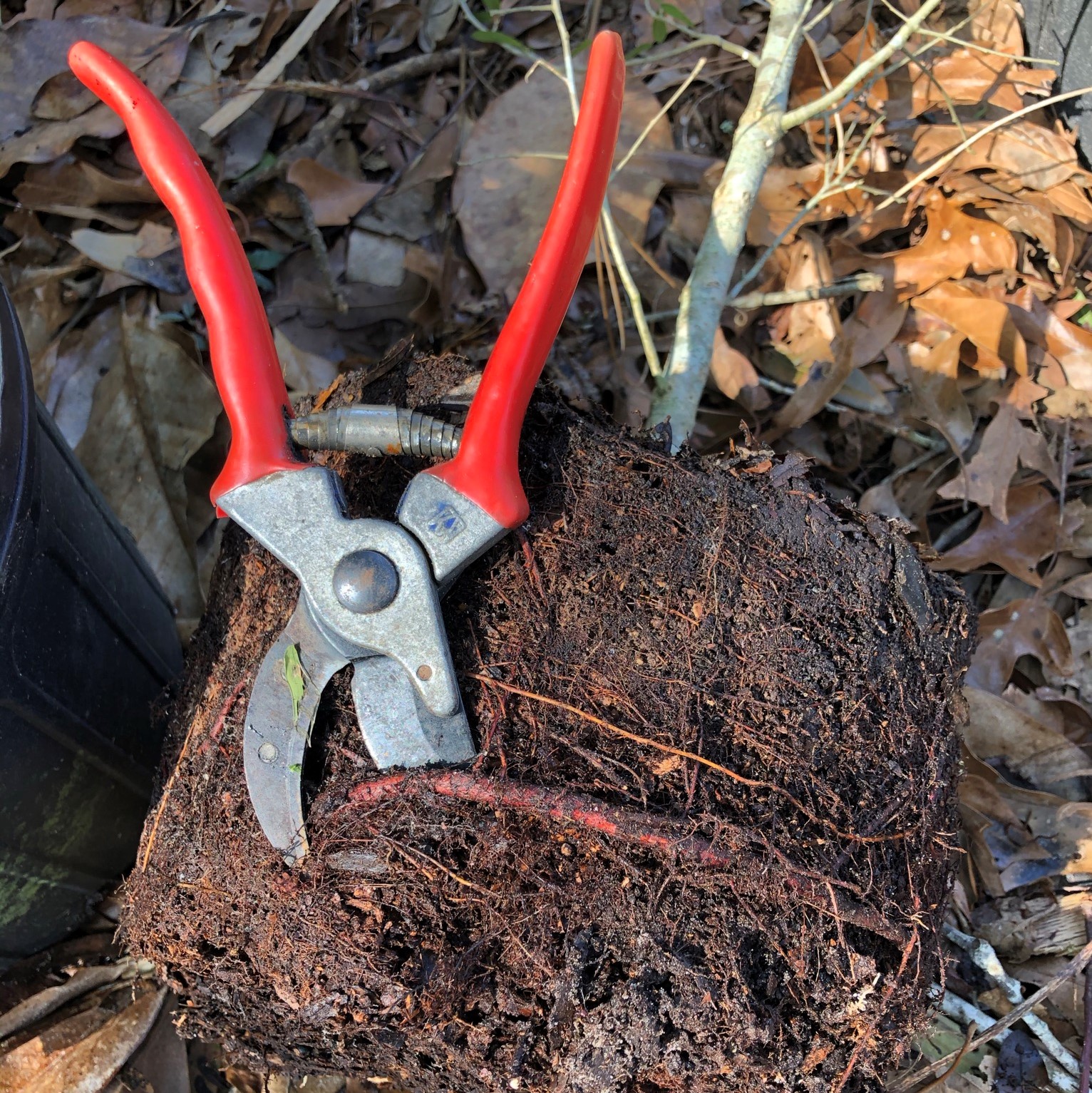For my friend David Minkler, trees are his reason for being. As an ISA (International Society of Arboriculture) Certified Arborist, David looks at a tree with different eyes than most of us, interpreting the many clues that tell him how each plant is fairing. And there are so many things and circumstances that can be positive or negative for the trees that he studies and cares for.
Of the many pet peeves that David has about how trees are handled, the way they are planted, especially for those raised in a pot, is number one! I have learned much from spending time with David, but this statement about the importance of planting day rises to the top: “Planting day is the most important day in the life of a tree. How well this is done can determine the length and quality of its life.” Many have said this before David, but he lives it!
Of all of the steps in the process of planting, one of the most important is how we handle the root ball. In most cases, the roots of a potted plant grow in a circular pattern forced upon them by the pot within which they have spent many years. As is the case with most potted plants placed in our landscape, the root ball is not treated before the plant is placed in its new home. The result is the continued growth of these roots – in that circle – that limits their spread to the soil around them where they can find new nutrients and enough water to thrive. Roots do not move from where they form, they just continue to grow. If left in this pattern, they will ultimately strangle the tree.
Although many nurseries do a good job of repotting trees into bigger pots as they grow, some do not. This simple step provides more space for the roots to grow outward within the new space of the larger pot. Newer pot designs and techniques are being tested to reduce this pattern. Regardless, this step in the planting process is the one most ignored, because many of us fear hurting the tree by tampering with their roots. On the contrary, new guidance on planting encourages active treatment of the root ball to break up this circular pattern.

So, as we all begin to plant those new trees and shrubs that we have gotten for our yards, this is a great time to review the steps in the planting process. A video of David demonstrating these steps is available from the Ocean Springs Environmental Committee’s Facebook page at https://www.facebook.com/102385708231848/videos/2597813430548430.
The key step of treating the root ball is simple enough. After removing the plant from the pot, inspect it for exposed roots growing in a circle. Dig down into the potting mix a bit. If you find circulating roots, cut them at the point they come out of the planting mix – all of them!!! Don’t be shy!
These well-planted plants will then have a great start in their new homes, and you will put a smile on David’s face.
Hope to see you in our great outdoors!